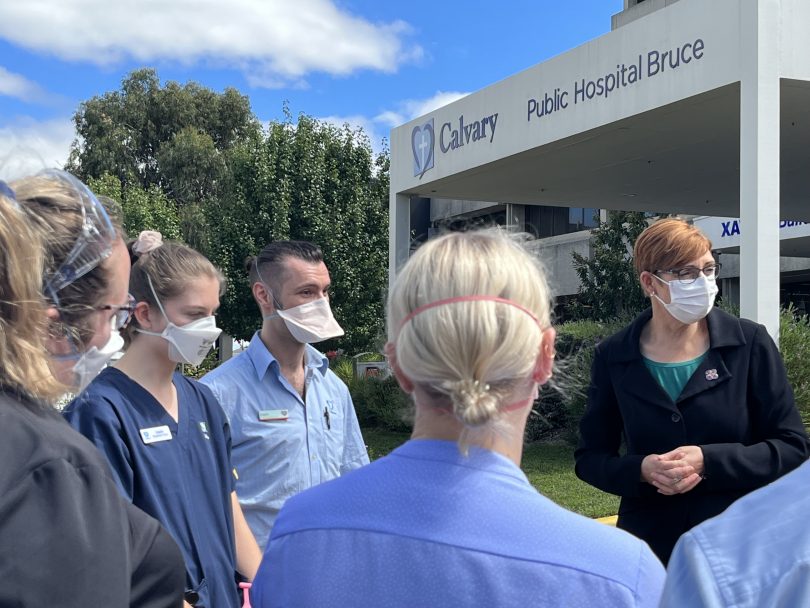
Minister for Health Rachel Stephen-Smith said more than half the 90 nurses needed to meet phase one of the implementation of new nurse-to-patient ratios have already been hired. Photo: ACT Government.
More than half the 90 additional nurses required to meet phase one of the government’s staged implementation of improved nurse-to-patient ratios have already been recruited, Minister for Health Rachel Stephen-Smith has confirmed.
Another 40 nurses will be brought on board by the end of the financial year in order to ensure minimum ratios are in place on the general medical, general surgical, acute aged care, and adult mental health unit wards.
In total, there are 16 wards where nurses are working with a ratio framework in place.
The minimum ratio for nurses or midwives to patients will depend on the clinical setting. Usually, one nurse will be assigned to every four patients on the above wards while a night duty ratio may see more patients assigned to nurses.
The Australian Nursing and Midwifery Federation (ANMF) has been calling for ratios for a long time and welcomed the latest enterprise bargaining agreement.
ACT branch president Matthew Daniel described ratios as a game changer for nurses.
“We shouldn’t underestimate the profound and meaningful difference that this will make to nursing,” he said. “It will have long-lasting impacts through better workforce planning.”
Mr Daniel said the “magic number” of 90 additional nurses had been worked out through “quite a process of methodology”.
“The working group that was put together by ACT Health and the ANMF really went ward by ward to look at their current staffing arrangements and looked at the gap between what their current arrangements were against some of the benchmarks and how the other jurisdictions were doing,” he said.
“[We asked] … what is the gap between what’s currently provided and what would provide for safe care.”
The night duty ratio of one-to-six will be nation-leading, Mr Daniel confirmed.
The union has previously claimed that every additional patient added to a nurse’s workload over four patients can lead to a seven per cent increased risk of the patient dying within 30 days of rescue and to a seven per cent increased risk of failure to rescue.
ACT Heath confirmed to Region Media a month ago that the implementation of nurse-to-patient ratios was already underway locally after thousands of nurses in NSW walked off the job in what constituted their first strike in over a decade, and despite a ruling from the Industrial Commission that the strike should not go ahead.
Among their demands, a major one was that nurse-to-patient ratios should be implemented.
It had been a 2020 Labor election promise to implement nurse-to-patient ratios in the ACT if they were re-elected.
They also pledged to hire at least 400 extra healthcare workers, of which 200 would be nurses – 257 full-time equivalent positions were funded in the last budget.
“Ratios are important because they improve patient outcomes and help nurses to undertake their work safely, and in a way that makes them feel comfortable and confident,” Ms Stephen-Smith said.
Ms Stephen-Smith said the government was not only committed to implementing ratios to ensure a sufficient number of staff but also to ensure a sufficient mix of skills on each ward.
She acknowledged the pandemic had significantly impacted the ACT’s healthcare workforce but said COVID-19 had also allowed for the team to have its ranks bolstered through the hiring of additional staff to assist with the COVID-19 response.
“So, we know that we’ve got some of those additional staff that have been employed as part of our COVID-19 response and will be able to move into our acute care settings over time as well,” she said.
The ACT Government has committed $50 million over four years to fund the first phase of ratios.
They will later be implemented across additional wards.




















